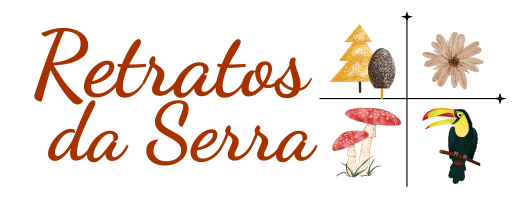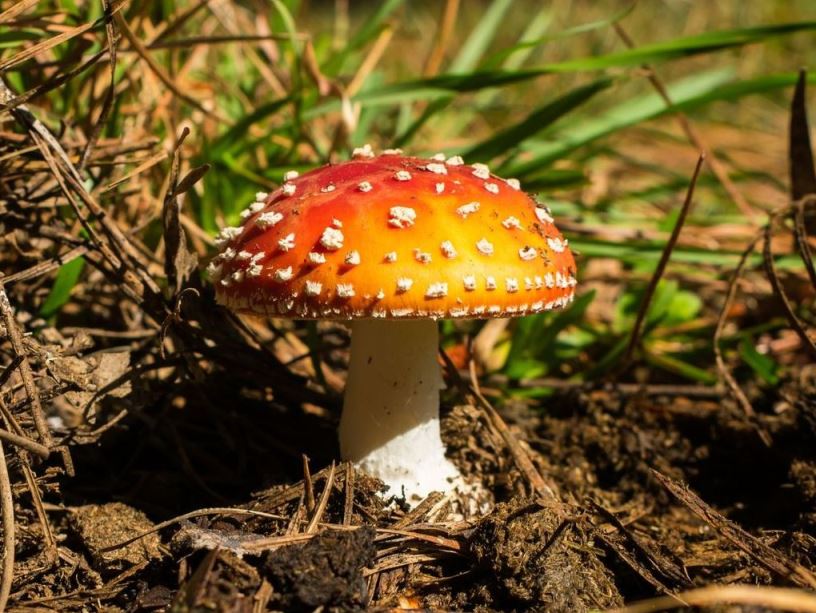In the fall and winter here in the Serra Gaúcha (Gaucho Highlands), Amanita muscaria mushrooms are always present. They are so beautiful and photogenic that it’s impossible not to stop and admire them, even if you have seen them many times. They are also commonly known as Fly agaric and Fly Amanita.
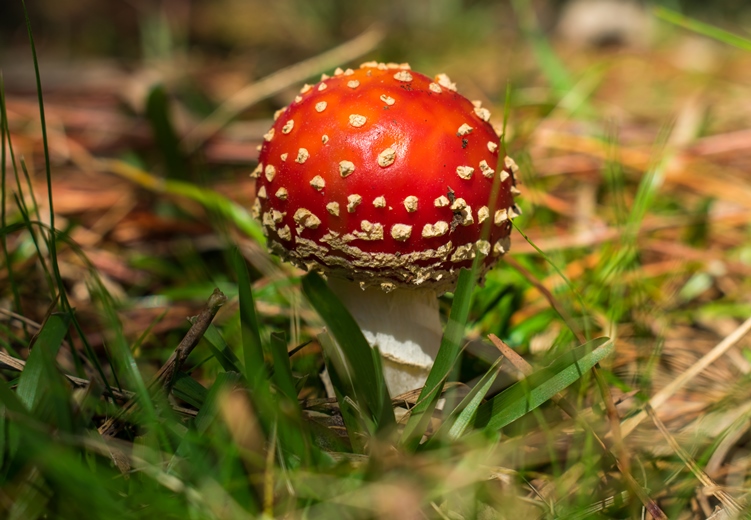
While researching, I discovered that these common names are due to the fact that this species has a substance called Ibotenic acid that attracts and kills flies. I even found information that it was traditionally used as an insecticide – for this purpose, its cap was cut in pieces or pulverized and placed in a bowl of milk.
It is the most famous and recognized mushroom worldwide; it is usually what comes to mind when you think of mushrooms! It is widely used in visual representations in the most varied forms (its use in the video game Mario Bros and in the cartoon The Smurfs are examples), and for a long time it was the only emoji that represented mushrooms: 🍄
Amanita muscaria characteristics
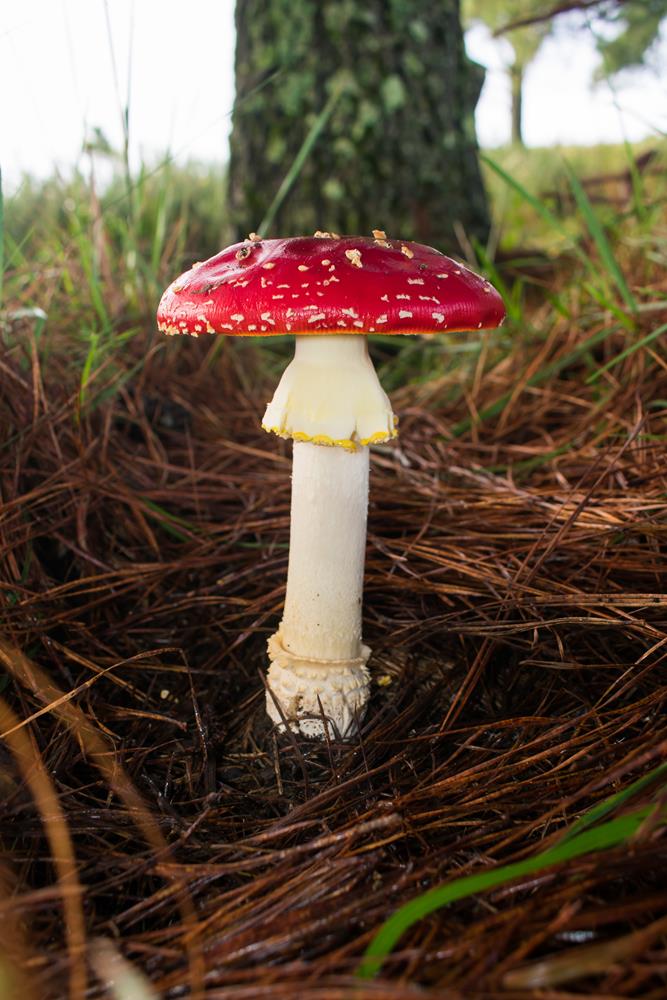

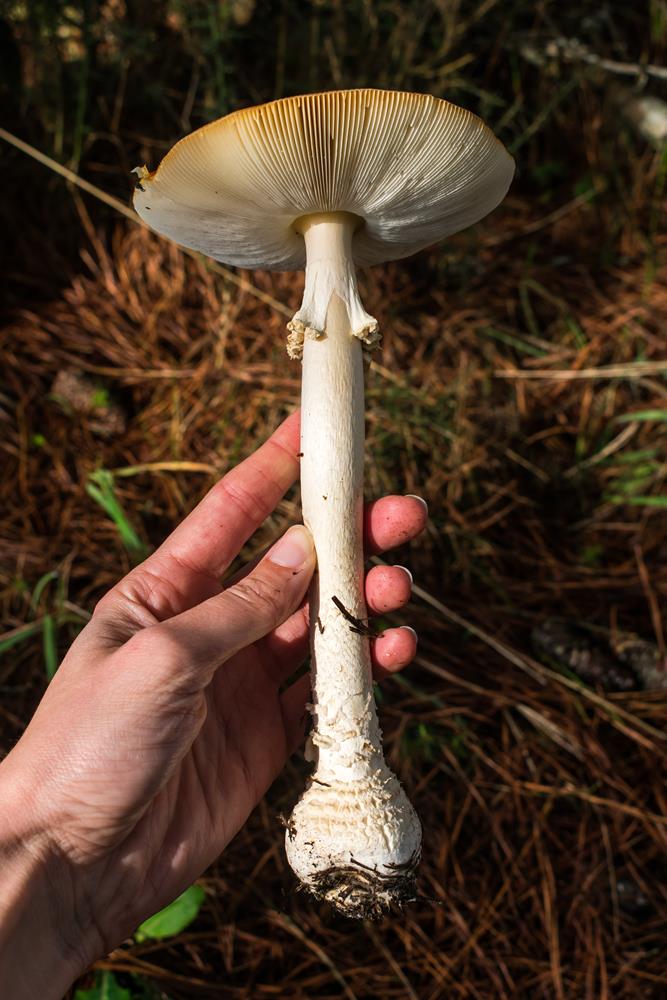
This mushroom is mycorrhizal, meaning it grows in association with the roots of certain trees. Here in Brazil, it is usually found in association with pine trees (Pinus sp.) and eucalyptus. Here it is much more common to find them with pine trees, but I have also found some in eucalyptus plantations.
It is native to the northern hemisphere, but it has been introduced to several other parts of the world where pine and eucalyptus plantations have been established. That is why it is quite common to find these mushrooms here in the South of Brazil, which is a region with many of these plantations and has a climate that is suitable for them, as they need a cooler temperature.
Its cap is reddish with small white scales (which are present in many mushrooms of the Amanita genus, by the way). However, the red color can fade considerably with a lot of rain or sun, and the scales can also be “washed off” after a lot of rain – in the picture above you can see one with no scales at all.
Its stipe (stem) is white and bulbous at the base, with a large ring (almost a “skirt”). Its hymenophore (the underside of the cap) has white, free lamellae (they do not touch the stipe).
When fully mature, it is about 8 to 20 cm tall and in the cap diameter, but even larger specimens have been found. The first Amanita muscaria I saw was a giant measuring 22 cm in diameter!
Uses of Amanita muscaria
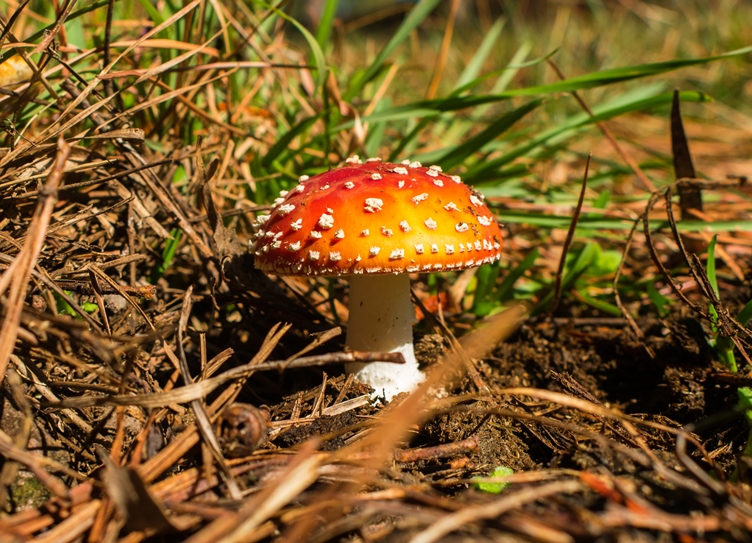
In addition to its use as an insecticide mentioned above, it is most famous for being considered a “magic mushroom”, as it has psychoactive and hallucinogenic properties when ingested. It was even widely used as an entheogen (traditional use that refers to a religious communion under the effect of substances capable of altering consciousness) by many indigenous peoples of Siberia, among others.
There are also many reports of recreational and medicinal uses by various peoples of the northern hemisphere; it is truly a mushroom that has been used for a long time for various purposes. And it is still used today for recreational purposes and by people seeking a hallucinogenic experience here in Brazil as well.
However, it is necessary to know how to prepare it and the right amount to use; for example, the amount and proportion of toxic and hallucinogenic chemical compounds per mushroom varies greatly from region to region, specimen to specimen, and in the different seasons of the year, which can generate many cases of poisoning and unintentional overdose.
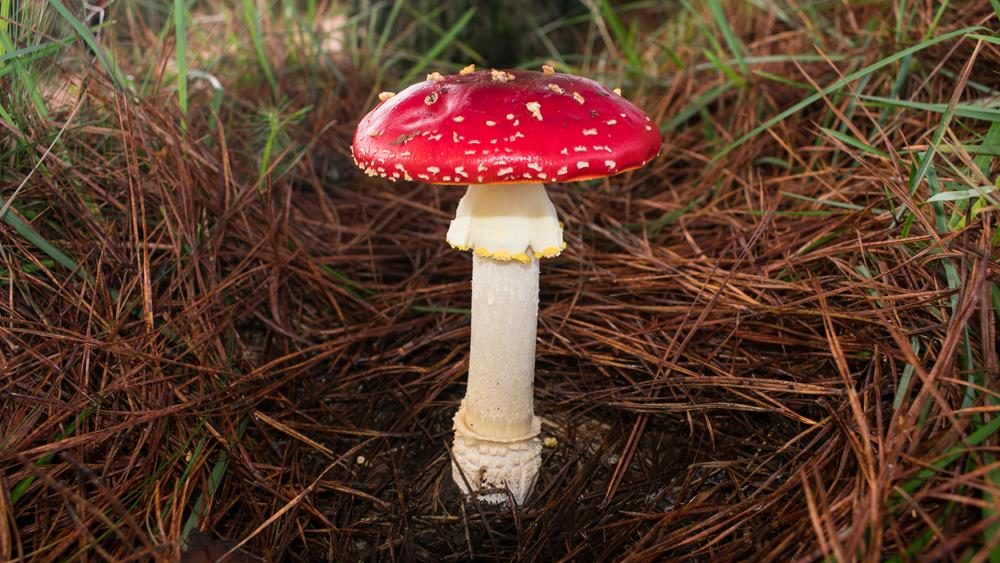
I read that some people also use Amanita muscaria as a food source; the toxins present in the mushroom are soluble in water, so boiling it and then discarding the water (this process is repeated several times) is said to neutralize the toxins.
There are also cases of poisoning and death related to the consumption of this mushroom, which generates fear in many people. However, with modern medical treatment, fatal poisoning has become extremely rare; I even found information that there have been no reports of deaths from ingesting Amanita muscaria in over 100 years.
The current cases of poisoning usually involve children, people who mistake it for an edible mushroom and do not prepare it properly, or those who consume too much for recreational purposes.
In short, it would be possible to write a book just with all the history and possible uses of this mushroom! However, I have no experience using it, nor do I know how to prepare it to recommend it. I currently prefer to just admire the beauty of these mushrooms!
📸 Pictures made in São Francisco de Paula, Rio Grande do Sul (Serra Gaúcha, South of Brazil).
⚠ Remember to never eat wild mushrooms without proper identification.
